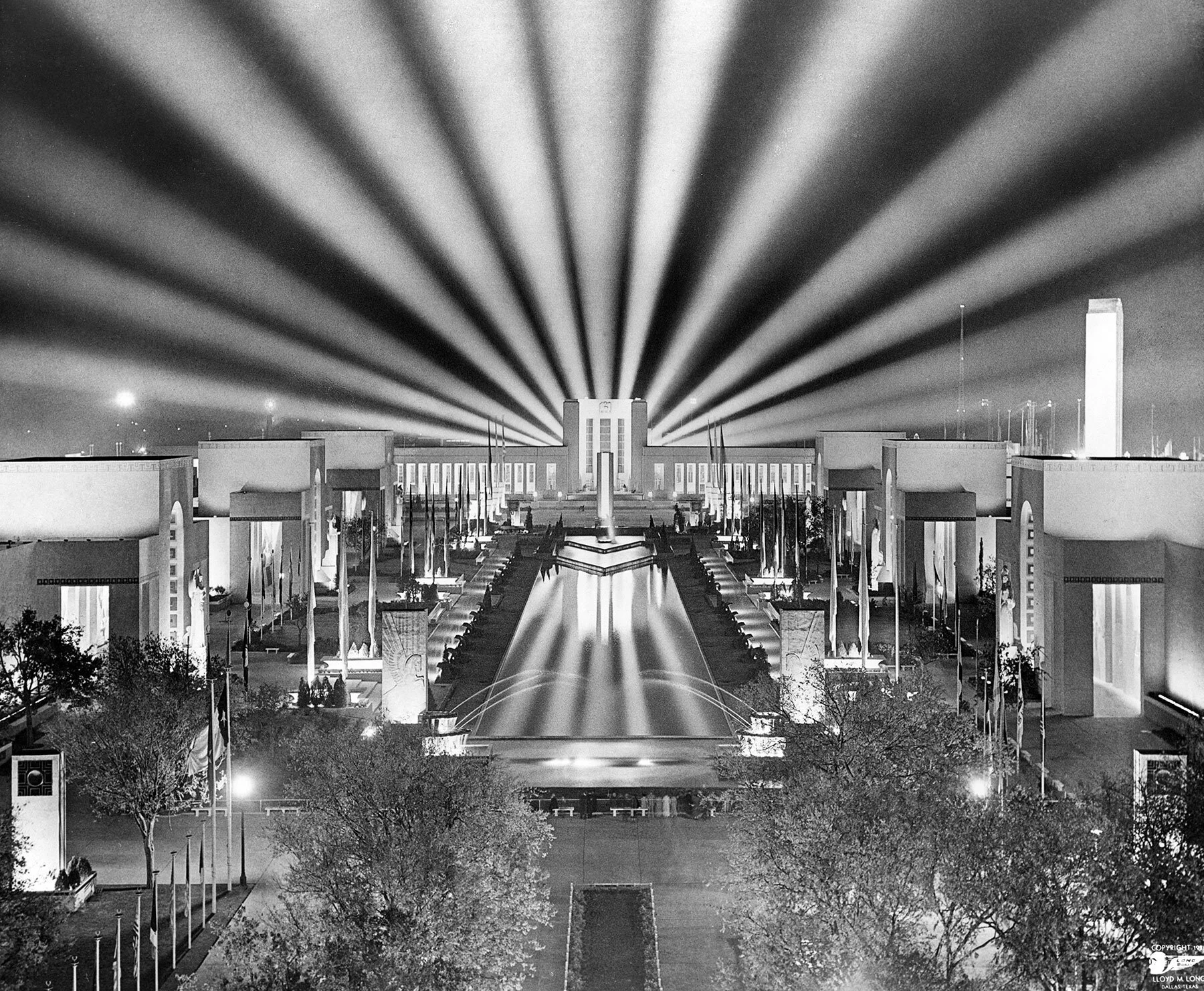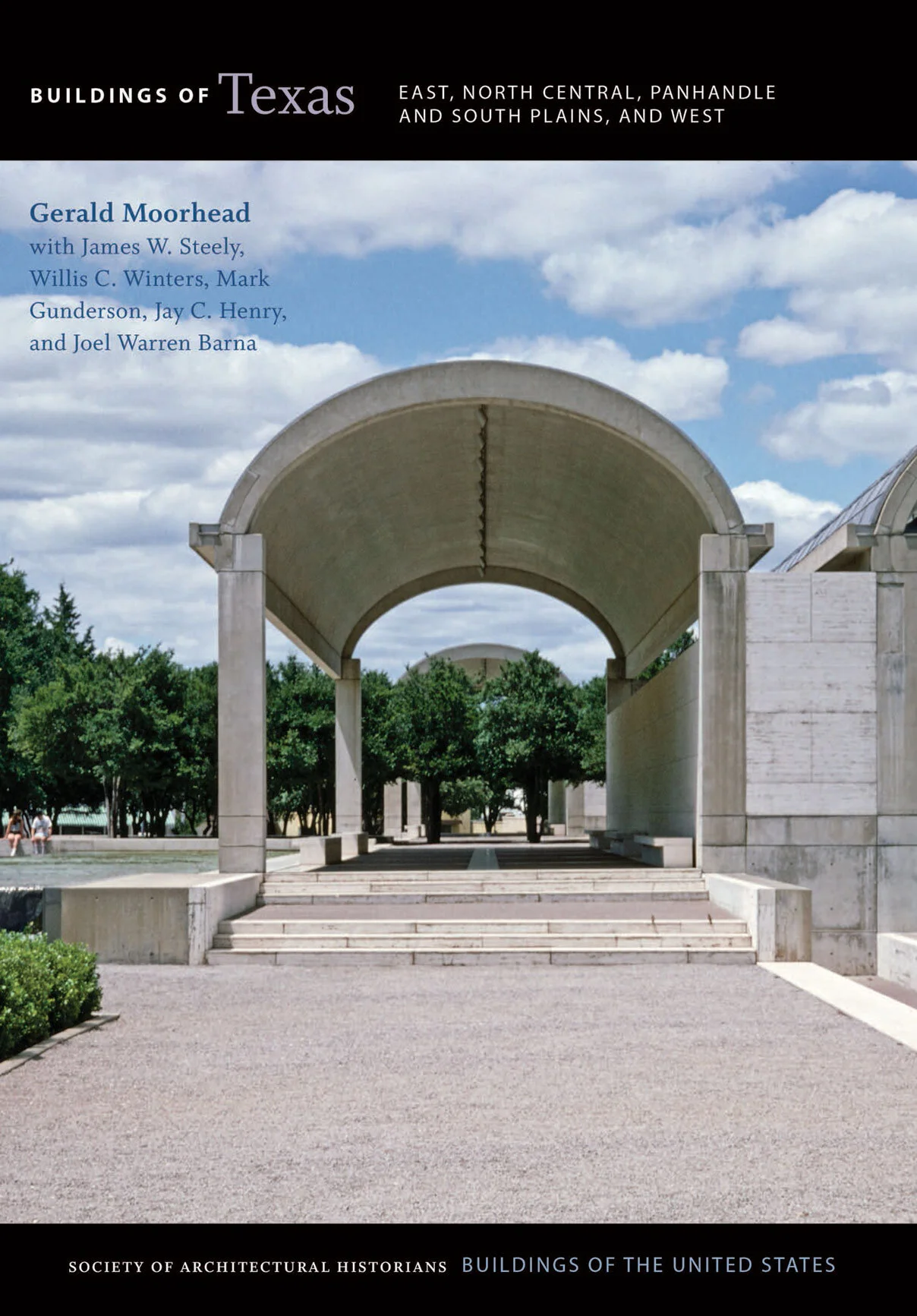Filtering by: History in Print
![History in Print featuring 'John S. Chase – The Chase Residence']()
Preservation Houston’s History in Print author series continues Thursday, March 6, as architect and University of Texas professor David Heymann discusses his book John S. Chase – The Chase Residence. Join us at 6:30 p.m. that evening as we explore the story of one of Houston’s most iconic modern homes and the visionary architect who created it.
![The Sublime Art: Victor Lundy’s Modernism (online program)]()
Architect Victor Lundy’s long and varied career saw him produce striking, sculptural designs for homes, retail stores, churches and government buildings. Lundy was trained in the Beaux Arts and Bauhaus traditions, and though his work drew from both, his experimentation with material and form gave him a style all his own. Today, Lundy’s work is praised for its careful composition and timeless quality — and yet he remains one of the most underappreciated figures in modern American architecture.
![History in Print featuring 'The Architecture of Birdsall P. Briscoe']()
Advance registration is strongly encouraged for this event.
Architectural historian Stephen Fox's new book The Architecture of Birdsall P. Briscoe examines Houston architect Birdsall P. Briscoe's country houses, offering a glimpse into the architect's methods and analyzing how Briscoe built a "social architecture" to frame his clientele during periods of economic expansion and contraction. Join Fox for a special History in Print author event as he recaps Briscoe’s significant work, followed by a Q&A with the audience.
![Virtual History in Print featuring ‘Waxahachie Architecture Guidebook']()
Please note that advance registration is required for this online program.
Join Preservation Houston and Margaret Culbertson, co-author of theWaxahachie Architecture Guidebook, for an online History in Print program at 6:30 p.m. Tuesday, February 22, exploring the buildings of Waxahachie and what they reveal about evolving design sensibilities, an evolving economy and generations of social change.
![Virtual History in Print featuring ‘Architecture That Speaks’]()
Please note that advance registration is required for this online program.
Join Preservation Houston and authors Nancy McCoy and David Woodcock on Tuesday evening, November 9, for an online History in Print program featuring their book Architecture That Speaks: S.C.P. Vosper and Ten Remarkable Buildings at Texas A&M.
![History in Print: 'Improbable Metropolis' with Barrie Scardino Bradley]()
Please note that advance registration is required for this online program.
Join Preservation Houston and author and architectural historian Barrie Scardino Bradley on Tuesday evening, May 4, for an online History in Print program featuring Bradley’s award-winning book Improbable Metropolis: Houston’s Architectural and Urban History.
![Making Houston Modern: The Life and Architecture of Howard Barnstone]()
Complex, controversial, and prolific, Howard Barnstone was a central figure in the world of 20th-century modern architecture. Recognized as Houston’s foremost modern architect in the 1950s, Barnstone came to prominence for his designs with partner Preston M. Bolton, which transposed the rigorous and austere architectural practices of Ludwig Mies van der Rohe to the hot, steamy coastal plain of Texas.
![Virtual History in Print: 'Fair Park Deco']()
Join Preservation Houston's David Bush and Jim Parsons on Tuesday evening, June 30, as they discuss their book Fair Park Deco: Art and Architecture of the Texas Centennial Exposition in a virtual History in Print author event.
![History in Print featuring 'Buildings of Texas,' Vol. 2]()
Rediscover the architectural treasures of the Lone Star State when author/photographer Gerald Moorhead presents an illustrated lecture on his landmark book, Buildings of Texas: East North Central, Panhandle and South Plains, and West during History in Print on November 19.
![History in Print featuring 'After Alden']()
Few American architects have had the opportunity to design an entire city. In the early 1940s, Alden B. Dow joined their ranks when Dow Chemical expanded its Freeport plant, prompting the construction of a new town for plant employees: Lake Jackson. In addition to model home designs, Dow produced plans for schools, churches, a movie theater and commercial buildings. His city plan and modern building designs formed the basis for the area’s growth in the decades that followed.
![History in Print featuring 'Victor Lundy: Artist Architect']()
If you're looking for something new under the midcentury sun, Victor Lundy is a real find — an important yet underappreciated figure in the history of American architecture. Trained in both the Beaux Arts and Bauhaus traditions, he built an impressive practice ranging from small-scale residential and commercial buildings to expressive religious buildings and two preeminent institutional works: the U.S. Tax Court Building in Washington, D.C. (now on the National Register of Historic Places), and the U.S. Embassy in Sri Lanka.
![History in Print featuring 'Lost, Texas']()
In Lost, Texas: Photographs of Forgotten Buildings, architect and architectural photographer Bronson Dorsey takes us on a tour of abandoned buildings in Texas that evoke the mystique of bygone days and shifting population patterns. With a skilled photographer’s eye, he captures the character of these buildings — most abandoned and in a state of decay, though a handful have been repurposed as museums, residences or other functional structures.
![History in Print featuring 'Power Moves']()
In 1950, Greater Houston had just one freeway: the Gulf Freeway, the first sections of which were built immediately after World War II. Since then, more than 1,200 miles of freeways have been built in Houston and Harris County, and additional freeways are under construction. Highways have driven nearly every aspect of Houston’s postwar development, from the physical layout of the city to the political process that has transformed both the transportation network and the balance of power between the government and citizens.
![History in Print featuring 'Constructing Houston's Future']()
Houston architect Arthur Jones helped to design some of the city's most familiar buildings and developments, including the Astrodome, Greenway Plaza, Allen Center and Rice Stadium. Despite Jones' prolific career with the firm Lloyd Morgan Jones, his designs are often overshadowed by the big-name national architects who worked during the Bayou City's postwar boom.
![History in Print featuring ‘Architecture That Speaks’]()
Between 1928 and 1933, the Agricultural and Mechanical College of Texas — later Texas A&M University — saw its campus transformed through the construction of 10 remarkable buildings developed under a master plan by college architect Frederick Giesecke and designed by Samuel Charles Phelps Vosper. The buildings, all of which survive, still delight the senses with color, sculpture and wit.
![History in Print featuring 'DFW Deco']()
Texas isn't known for its Art Deco design, but the Lone Star State has more than its share — particularly in North Texas, where cotton, cattle and oil combined to create a rich variety of modernistic buildings, artwork and monuments in the 1920s, '30s and '40s. Preservation Houston's David Bush and Jim Parsons explore the region's Deco treasures in DFW Deco: Modernistic Architecture of North Texas, the pair's fourth book chronicling Art Deco in the Lone Star State.
![History in Print featuring 'Pleasant Bend']()
On Tuesday, August 8, hear stories of Harris County's pioneer beginnings when Dan Worrall, the author of Pleasant Bend: Upper Buffalo Bayou and the San Felipe Trail in the Nineteenth Century, explains how a sluggish body of water and a rugged trail stirred an economic engine. Roughly following the route of today's San Felipe Road, the trail carried cotton from plantations along the Brazos and Colorado rivers across seemingly endless tallgrass prairie to Houston's port on Buffalo Bayou for shipment to the wider world. After Emancipation, African American families from those same plantations made their way east on the San Felipe Trail to begin new lives in Houston's Freedmen's Town.
![History in Print featuring 'Material Culture of German Texans']()
From the days of the Republic, German immigrants left a distinctive mark on the architecture and lifeways of Texas that is still evident today. In his award-winning book, Kenneth Hafertepe shares a decade of research examining how German culture was adapted to everyday life in rural, small-town and urban settings from East Texas to the Hill Country.
![History in Print featuring 'The Other Great Migration']()
The 20th century saw two great waves of African-American migration from the countryside into the city, changing not only the nation's demographics, but its culture as well. Join Preservation Houston on Thursday evening, October 20, as author and historian Bernadette Pruitt tells the story of The Other Great Migration as part of Preservation Houston's History in Print author series.
![History in Print featuring 'BIG Little House']()
As Houston experiences increasingly dense development and rising housing costs, could the future of our neighborhoods include a step back to small houses?
During her presentation, author Donna Kacmar will demonstrate that small dwellings (under 1,000 square feet) are not just down-sized versions of big houses. Thoughtfully designed small houses can be integrated into their surroundings and reflect the priorities of the people who live in them. Using exceptional examples from around the country, Kacmar will offer insights for anyone interested in small-scale projects and illustrate how building small can be a deliberate design strategy in its own right.



















